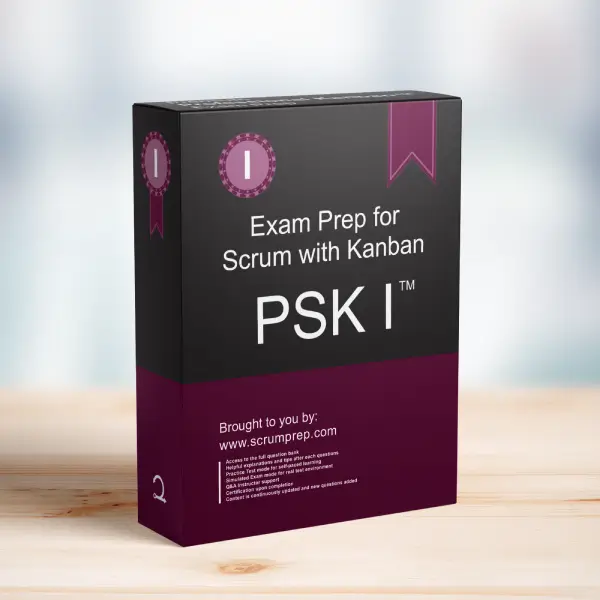Key Flow Metrics in Scrum with Kanban
Understanding the key flow metrics is crucial for managing workflow and improving performance in Scrum with Kanban practices.
Exam Question
What are the four key flow metrics in Scrum with Kanban?
(choose the best answer)
A. Work in Progress (WIP), Velocity, Lead Time, Cycle Time.
B. Velocity, Lead Time, Cycle Time, Cost.
C. Throughput, Work in Progress (WIP), Velocity, Lead Time.
D. Work in Progress (WIP), Work Item Age, Throughput, Cycle Time.
Correct Answer
D. Work in Progress (WIP), Work Item Age, Throughput, Cycle Time.
Explanation
Correct Answer
D. Work in Progress (WIP), Work Item Age, Throughput, Cycle Time:
These four metrics are fundamental to understanding and managing the flow of work in a Kanban system:
- Work in Progress (WIP): Measures the number of work items currently being worked on. Managing WIP is crucial for maintaining a steady flow and preventing bottlenecks.
- Work Item Age: Indicates the amount of time a work item has been in progress. This metric helps identify items that may be stuck or taking longer than expected.
- Throughput: Measures the number of work items completed in a given time period. This metric helps assess the team’s productivity and delivery rate.
- Cycle Time: Measures the time it takes to complete a work item from start to finish. This metric helps understand how quickly the team can deliver work items.
Why the Other Options Are Less Effective
A. Work in Progress (WIP), Velocity, Lead Time, Cycle Time:
While WIP, Lead Time, and Cycle Time are relevant metrics, Velocity is more commonly associated with Scrum rather than Kanban. Velocity measures the amount of work completed in a Sprint and does not directly relate to flow management in Kanban.
B. Velocity, Lead Time, Cycle Time, Cost:
Cost is not a primary flow metric in Kanban. Velocity and Lead Time are useful, but Cost does not directly help in managing flow.
C. Throughput, Work in Progress (WIP), Velocity, Lead Time:
While Throughput, WIP, and Lead Time are important, Velocity is not a key metric in Kanban. Instead, Work Item Age is more relevant for managing flow.
Importance of the Four Key Flow Metrics
- WIP: Helps manage the amount of work in progress, ensuring a balanced workload and preventing bottlenecks.
- Work Item Age: Highlights items that are taking longer than expected, allowing the team to address potential delays.
- Throughput: Provides insights into the team’s productivity and helps forecast future performance.
- Cycle Time: Indicates the efficiency of the workflow and helps set realistic delivery expectations.
Effective Practices for Using Flow Metrics
- Monitor Regularly: Regularly track these metrics to gain insights into the workflow and identify areas for improvement.
- Set WIP Limits: Use WIP limits to manage the amount of work in progress and maintain a steady flow.
- Analyze and Adapt: Continuously analyze the metrics and adapt processes to improve efficiency and predictability.
Relevance to the PSK I Exam
Understanding and using the key flow metrics in Scrum with Kanban is crucial for the PSK I exam. It demonstrates knowledge of effective workflow management practices that enhance team performance and delivery.
Key Takeaways
- The four key flow metrics in Scrum with Kanban are WIP, Work Item Age, Throughput, and Cycle Time.
- These metrics help manage the flow of work, identify bottlenecks, and improve team efficiency and predictability.
- Regularly monitoring and analyzing these metrics is essential for continuous improvement in Kanban practices.
Conclusion
The four key flow metrics in Scrum with Kanban are Work in Progress (WIP), Work Item Age, Throughput, and Cycle Time. These metrics are essential for managing workflow and improving team performance. For more information on preparing for the PSK I exam, visit our Professional Kanban PSK I™ Exam Prep.



